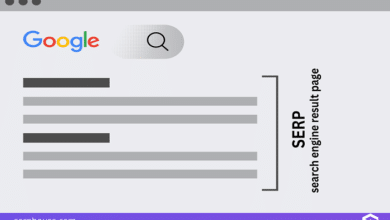The Comprehensive Guide to Creating an Effective Research Page

Introduction
In the digital age, a well-crafted research page is essential for academics, students, and professionals alike. Whether you’re showcasing your latest study, sharing resources, or collaborating with peers, a robust research page can significantly amplify your work’s visibility and impact. This guide delves into the crucial aspects of building a compelling research page, covering everything from design principles to SEO strategies. By the end, you’ll have the tools and knowledge to create a research page that not only looks great but also serves as a valuable resource for your audience.
The Purpose of a Research Page
A research page serves as a centralized hub for your academic or professional work. It allows you to share your research findings, publications, data sets, and related materials with a broader audience. The primary purpose of a research page is to enhance the accessibility and dissemination of your research, fostering collaboration and engagement within your field. By clearly defining the purpose of your research page, you can better tailor its content and design to meet your objectives.
Key Elements of a Research Page
Every effective research page should include certain key elements to ensure it meets the needs of its audience. These elements typically include:
- Introduction: A brief overview of your research interests and goals.
- Publications: A list of your published works with links to full texts or abstracts.
- Projects: Detailed descriptions of ongoing or completed research projects.
- Data Sets: Access to relevant data sets that support your research.
- Collaborations: Information on your collaborative work and partners.
- Contact Information: Easy ways for others to reach you for questions or collaborations.
Best Practices for Designing a Research Page
The design of your research page is crucial for user engagement. A clean, intuitive layout helps visitors find information quickly and easily. Use clear headings and subheadings, employ white space effectively, and choose a readable font. Visual elements such as charts, graphs, and images can also enhance comprehension and engagement. Remember, the goal is to make your research page both aesthetically pleasing and functional.
Writing Compelling Content for Your Research Page
Content is king, even on a research page. The text should be clear, concise, and free of jargon to reach a broader audience. Each section should provide value, whether it’s explaining the significance of your research, detailing your methodologies, or highlighting key findings. Don’t forget to update your content regularly to reflect your latest work and achievements. This not only keeps your research page current but also encourages repeat visits.
Optimizing Your Research Page for SEO
Search engine optimization (SEO) is essential for increasing the visibility of your research page. Use relevant keywords naturally throughout your content, including in headings, meta descriptions, and alt text for images. Ensure your page loads quickly and is mobile-friendly, as these factors can impact your search engine ranking. Additionally, acquiring backlinks from reputable sites can boost your page’s authority and search engine performance.
Integrating Multimedia into Your Research Page
Multimedia elements can greatly enhance the effectiveness of your research page. Videos, infographics, and interactive elements can make complex information more accessible and engaging. For example, a short video summarizing your research findings can capture attention more effectively than text alone. Ensure all multimedia elements are of high quality and relevant to your research.
Ensuring Accessibility on Your Research Page
Accessibility is a critical consideration when designing your research page. Your content should be accessible to all users, including those with disabilities. This involves using descriptive alt text for images, ensuring your site is navigable via keyboard, and providing transcripts for video and audio content. An accessible research page not only broadens your audience but also demonstrates your commitment to inclusivity.
Promoting Your Research Page
Once your research page is live, promoting it is key to driving traffic and engagement. Share your page on social media, include the link in your email signature, and consider submitting it to relevant directories and databases. Networking with colleagues and presenting at conferences can also provide opportunities to promote your research page. The more visibility you generate, the greater the impact of your work.
Analyzing and Improving Your Research Page
Regular analysis of your research page’s performance can help you make informed improvements. Use tools like Google Analytics to track metrics such as page views, time on page, and bounce rate. Feedback from colleagues and users can also provide valuable insights. Continually refining your research page based on data and feedback will enhance its effectiveness over time.
Case Studies: Successful Research Pages
Examining successful research pages can provide inspiration and practical insights. Look for examples within your field and note what makes them effective. Pay attention to layout, content organization, use of multimedia, and engagement strategies. By learning from the best, you can apply proven techniques to your own research page and achieve similar success.
Conclusion
Creating an effective research page requires careful planning and execution. By understanding its purpose, incorporating key elements, designing for user engagement, and optimizing for SEO, you can build a research page that significantly enhances the visibility and impact of your work. Integrating multimedia, ensuring accessibility, and promoting your page are also crucial steps. Regular analysis and improvement will keep your page relevant and effective. With these strategies, your research page can become a valuable asset in your academic or professional toolkit.
FAQs
- What should be included on a research page?
- A research page should include an introduction, publications, project descriptions, data sets, collaborations, and contact information to effectively showcase your work.
- How can I make my research page more engaging?
- Use a clean design, compelling content, and multimedia elements like videos and infographics to make your research page more engaging and accessible.
- Why is SEO important for a research page?
- SEO helps increase the visibility of your research page on search engines, driving more traffic and enhancing the reach and impact of your work.
- What are some accessibility considerations for a research page?
- Ensure your research page is navigable via keyboard, use descriptive alt text for images, and provide transcripts for video and audio content to make it accessible to all users.
- How often should I update my research page?
- Regularly update your research page to reflect your latest work and achievements. This keeps your content current and encourages repeat visits from your audience.
Read more about: uploadarticle





